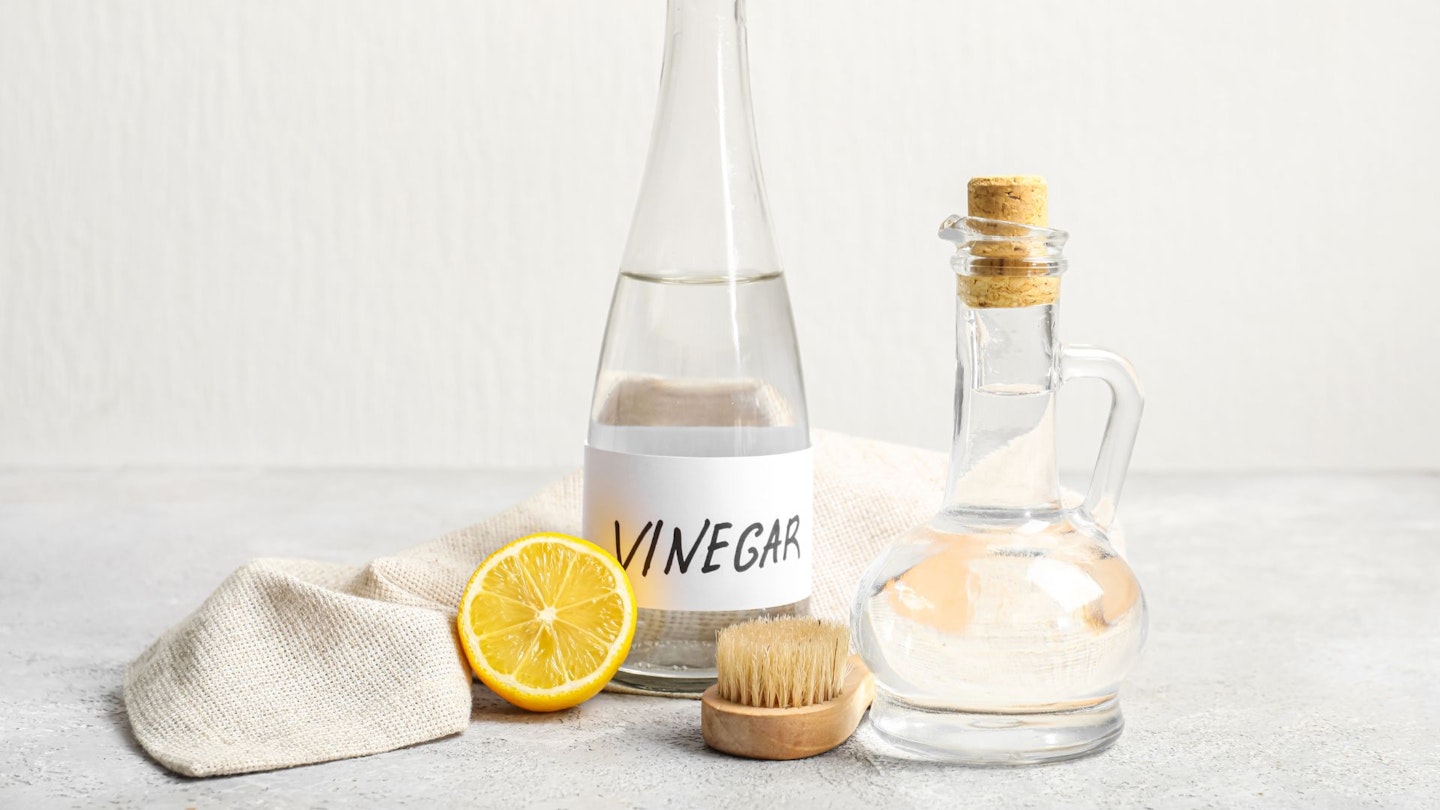Here at Yours, we love a homemade cleaning product. Give us a home remedy that saves us some pennies, we’ll try it. One ingredient which we swear by for cleaning at home is white vinegar. It’s found in almost every home and is the perfect cleaning ingredient.
There are many positives to cleaning with vinegar - it’s eco-friendly as it’s edible and biodegradable, and it’s a natural disinfectant for killing some of the most common germs like salmonella and E. coli. It’s also 100% all-natural, vegan, hypoallergenic, and non-toxic- what’s not to love?
According to Laura Harnett, founder of eco-cleaning tools brand Seep, “White vinegar is the best type to use for cleaning as it has a powerful acidity that makes it truly multi-purpose.”
To make a basic cleaning solution with vinegar, mix 250 ml of white vinegar into a jug with 250 ml of cooled boiled water. Pop it in a spray bottle and voila- you’ve saved yourself a trip to the shops. Adding a citrus fruit to your mixture will also mask any remaining vinegar smell- however, if you’ve mixed correctly, this should not be too strong. If you’re feeling fancy, try adding a couple of drops of essential oil.
1. How to clean your washing machine with vinegar
If you're trying to figure out how to clean your washing machine, we have many tips and tricks, but you can also use regular white vinegar found in your pantry. White vinegar is the perfect cleaning agent for washing machines as even if it leaves residue behind, it will not harm your clothes. It also kills bacteria, and it reduces any odours that may have built up over time. Simply empty your machine, add a cup of vinegar to the detergent dispenser and run a hot cycle. For a thorough wash, once the cycle has ended scrub the drum with a mixture of 25% white vinegar to 75% water. You can even use this on the outside of the machine to ensure a sparkling clean washing machine.
Remember, do not let the vinegar come into contact with any of the rubber gaskets or seals, this can erode the material and render them useless. Since the rubber elements are what keep the machine leak-proof, it’s a pretty vital step to remember.
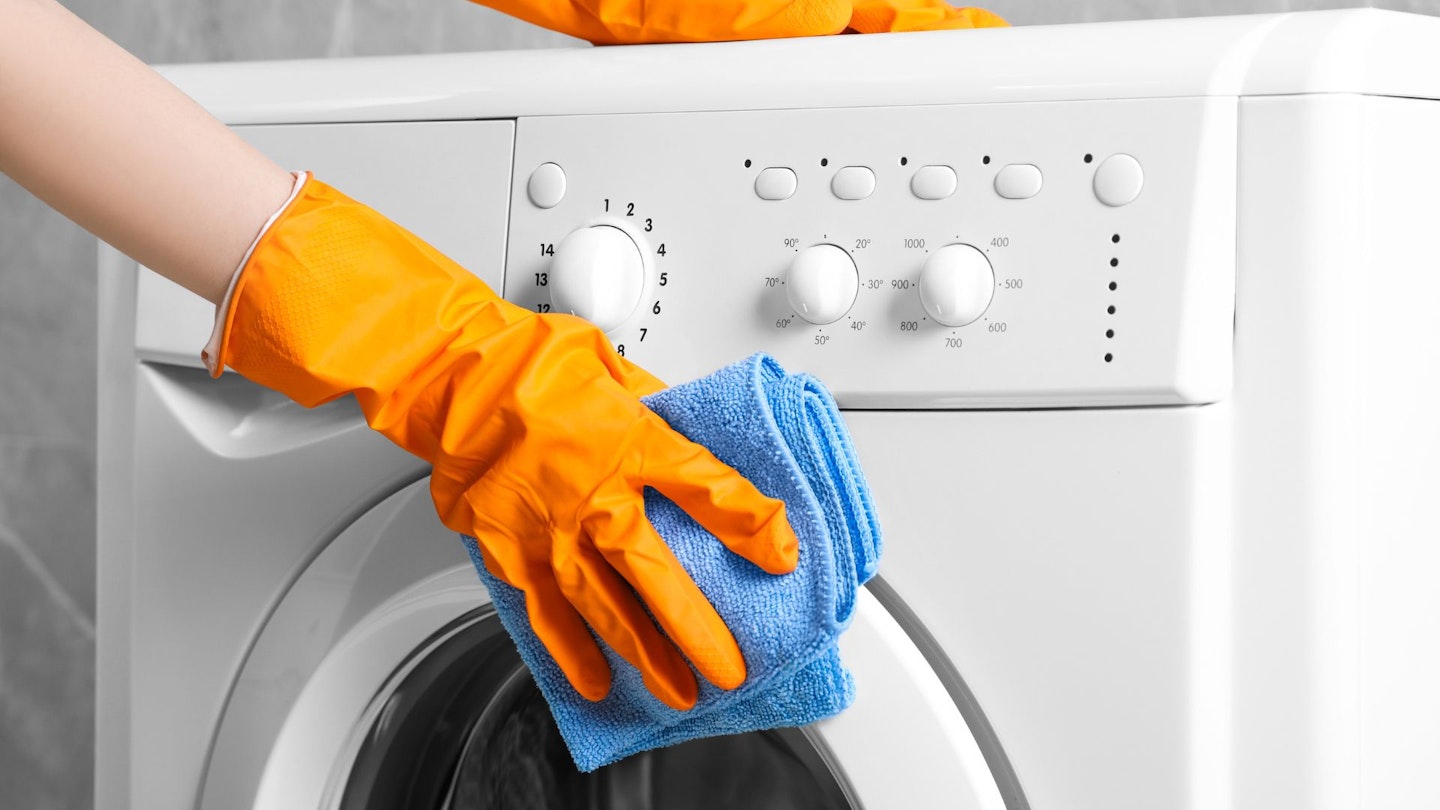
2. How to clean your dishwasher with vinegar
Even if you see no problems at the moment, it is still recommended that you clean your dishwasher to prevent future issues. Ben Peach, Product Laundry Manager at Haier Europe, says, “Prevention of problems like this is important and we have a solution that a homeowner can use every month to prevent clogging.”
First, fill a cup with vinegar and place it on the top rack standing upright. Placing it towards the back of the top rack will ensure an even distribution of the solution throughout your machine during the wash. Then, run your dishwasher with no other plates or cutlery inside. The vinegar will sterilise your dishwasher and get rid of any bacteria or smells that linger. It’s also non-toxic, so if any vinegar remains, it won’t damage your plates and cups on the next wash.
3. How to clean windows with vinegar
Grab an empty spray bottle and fill it with one-part warm water and one-part vinegar. The acidity of the vinegar will break down any grime or film that has built up on your windows. Some recommend adding a few drops of liquid soap to prevent streaking. The exact same solution can be used for mirrors or other glass surfaces. Insects are also not fond of vinegar, so this trick may help keep your windows cleaner for longer.
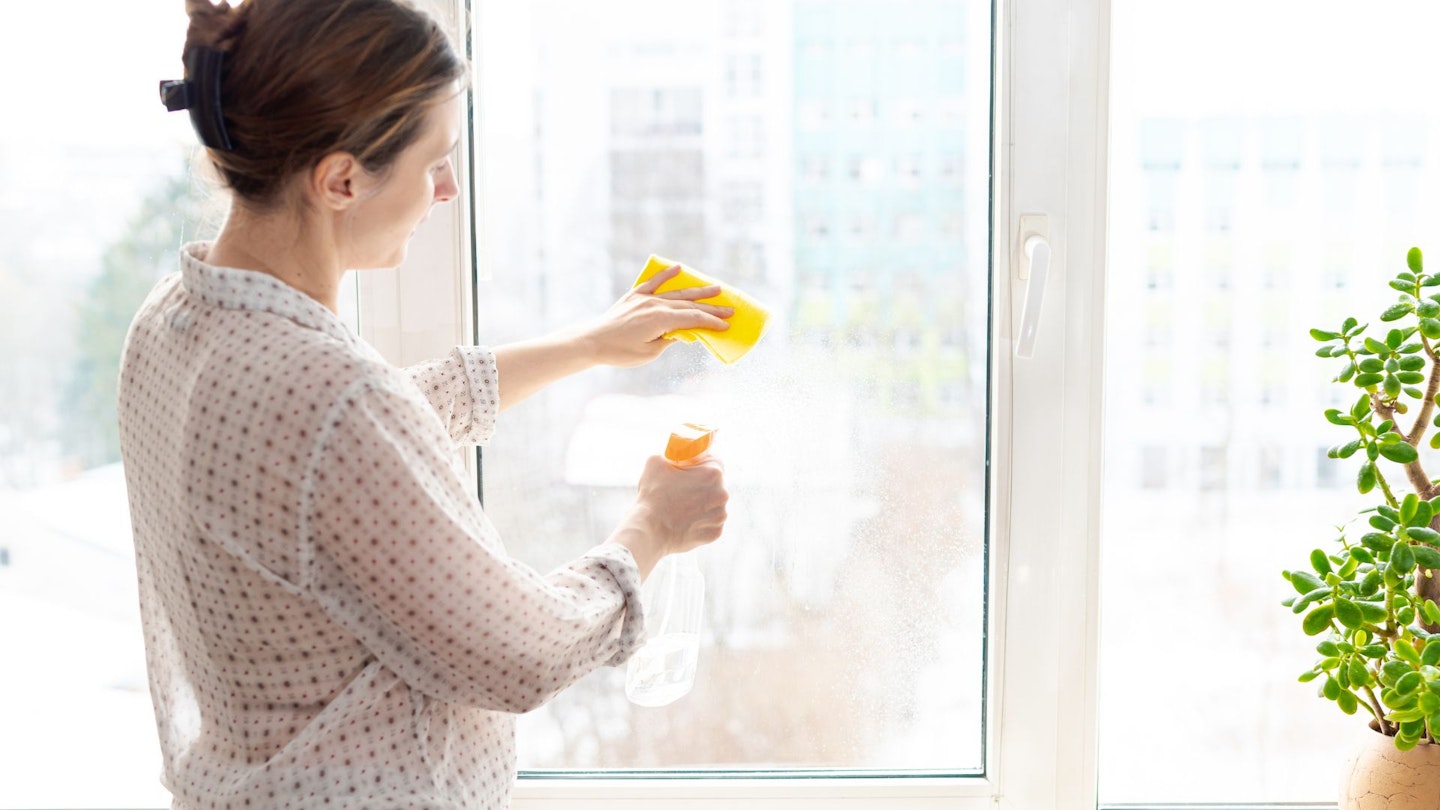
4. How to clean your floors with vinegar
It’s important to note that white vinegar can be used on tiled and laminate floors but should never be used on hardwood floors. First, hoover up any dirt or debris. For your solution, mix one cup of vinegar for every 500ml of warm water you use.
Declan Christie at Luxury Flooring & Furnishings says, “When you are cleaning wooden floorings or solid floorings such as laminate and vinyl, it can be tempting to use expensive specialist floor cleaners, although if you are looking for more natural and cheaper products to use outside of specialist products then you can always mix water with vinegar and rubbing alcohol with your choice of essential oils. This can be very budget-friendly and equally as effective."
5. How to unclog your drain with vinegar
Believe it or not, vinegar can also be used to unclog a drain and get rid of those pesky odours. Begin by boiling the kettle and pouring the hot water down the drain. Follow this up by pouring one cup of baking soda, and then a 50/50 water and vinegar mixture. Cover the drain plug for a few minutes, it’s not uncommon to see a reaction at this stage. Finally, flush the whole thing out by pouring another few cups of boiling water down the drain.
Keep in mind that a thoroughly clogged drain will require a professional plumber, but this vinegar and baking soda hack is useful for smaller clogs.
6. How to clean pots and pans with vinegar
An important note is that vinegar is only recommended for cleaning stainless steel pots and pans, aluminium and cast-iron pans are too sensitive for vinegar’s acidity.
Bon Appétit recommends, “If you have a particularly gnarly-looking stainless steel pan that won't get clean, boil together water and vinegar for a few minutes. It will dissolve grease and get rid of any weird stains or water spots. If it's really dirty, you can go longer. The more vinegar you use here, the more quickly the cleaning happens.”

7. How to clean a kettle with vinegar
Vinegar is the perfect home remedy for limescale. Fill the kettle with half white vinegar and half warm water and letting it sit. The acidity of the vinegar will begin to break down the limescale and you’ll see it wear away after an hour or so.
FAQs
What should not be cleaned with vinegar?
•Marble, granite or natural stone countertops
•Clothing irons
•Electronic devices and screens
•Hardwood floors
•Kitchen knives
•Waxed furniture
•Aluminium and cast-iron pots and pans
What is the difference between cleaning vinegar and white vinegar?
The main difference is that cleaning vinegar is more acidic and is sold specifically for cleaning purposes. On average, it is around 20% stronger and a little pricier than regular white vinegar.
Is distilled vinegar the same as white vinegar?
No, they are not the same. White vinegar is stronger and is better used for cleaning and disinfecting. Meanwhile, distilled vinegar is the better for cooking.
What should you not mix vinegar with?
Bleach- this can be a dangerous mix, and together they will create a gas that will irritate your eyes, skin, and anything else it may come into contact with.
Baking soda- this will neutralise the vinegar and be ineffective for cleaning.
Borax- this too will be rendered useless if mixed with vinegar. Separately, however, it is a powerful cleaning agent.
Hydrogen peroxide- these two should never mix as the results can create an acid that is very harmful.
Where to buy white vinegar?
Any supermarket should stock white vinegar.
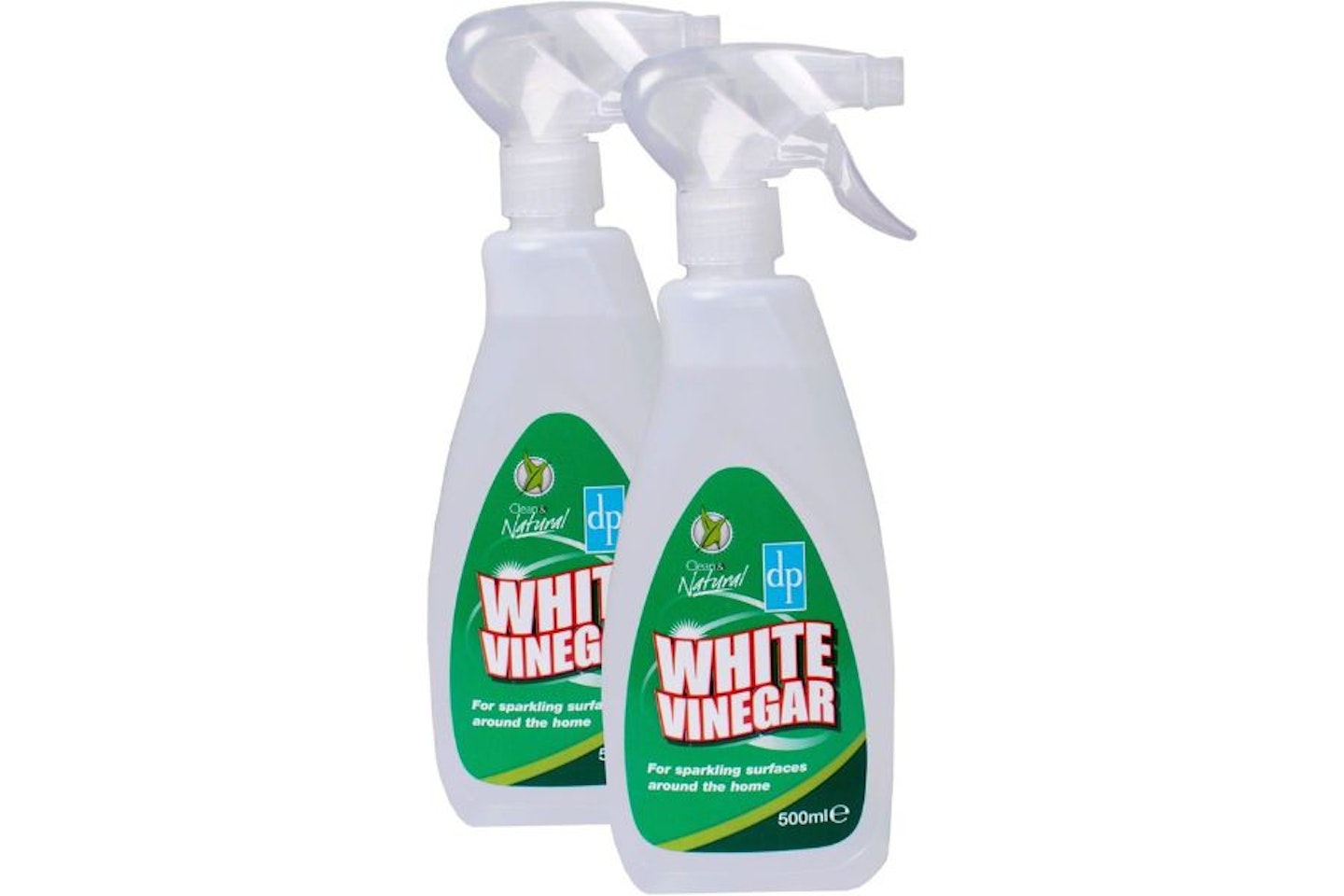 Amazon
AmazonThis pack of 2 is perfect for cleaning mirrors and glass surfaces. Each one comes in an easy to use, 500ml spray bottle.
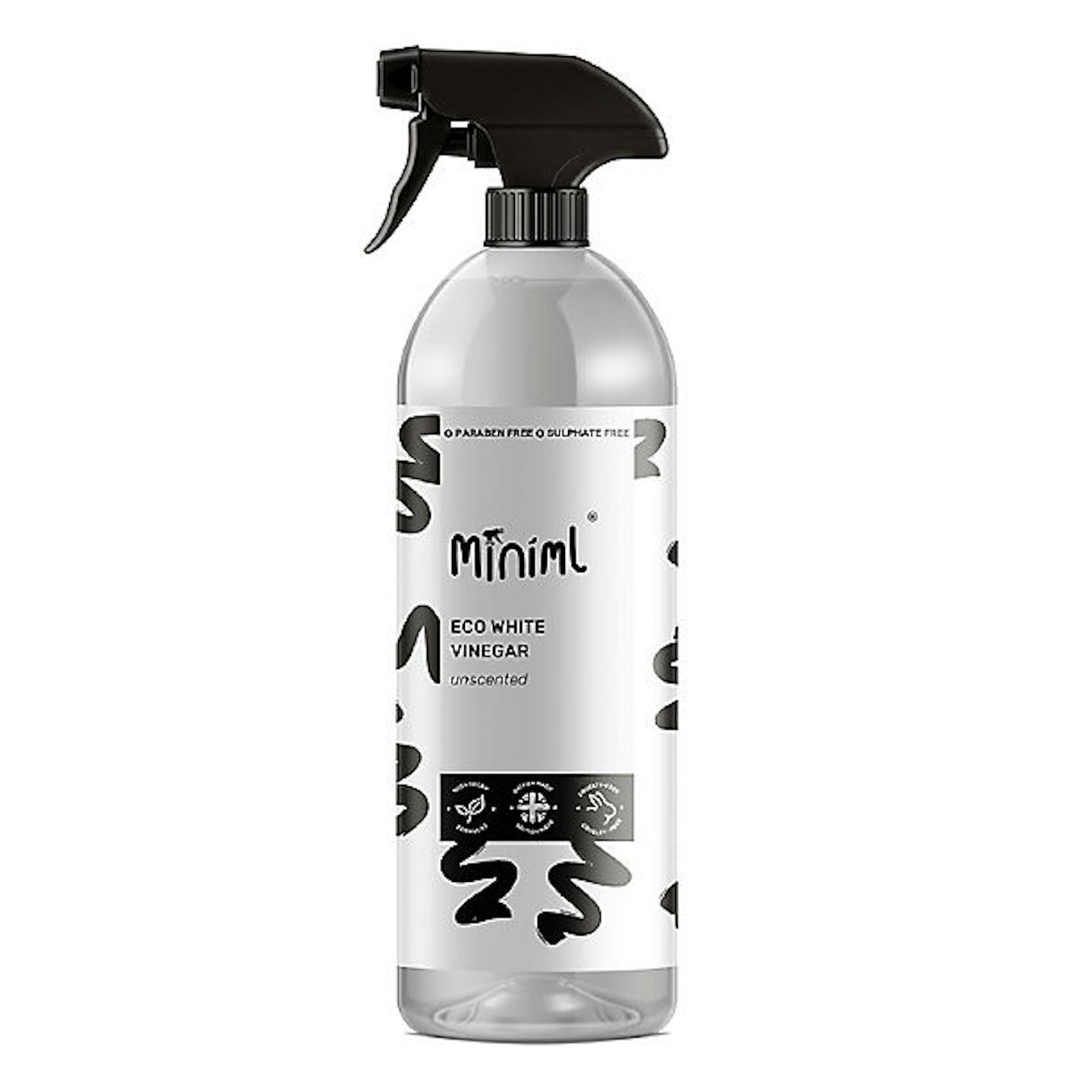 Lakeland
Lakelandwww.lakeland.co.uk
Miniml is an eco-friendly cleaning product that's unscented. It's a refillable bottle and the formula is also cruelty-free and vegan.
Sarah O’Byrne has been an editorial assistant at heat, Closer and Yours since May 2023. She has a BA in English with Film and an MA in Literature and Culture - both from University College Dublin.
To enjoy more regular stories just like this, become a Yours subscriber and become part of our fun and friendly community of like-minded readers.
